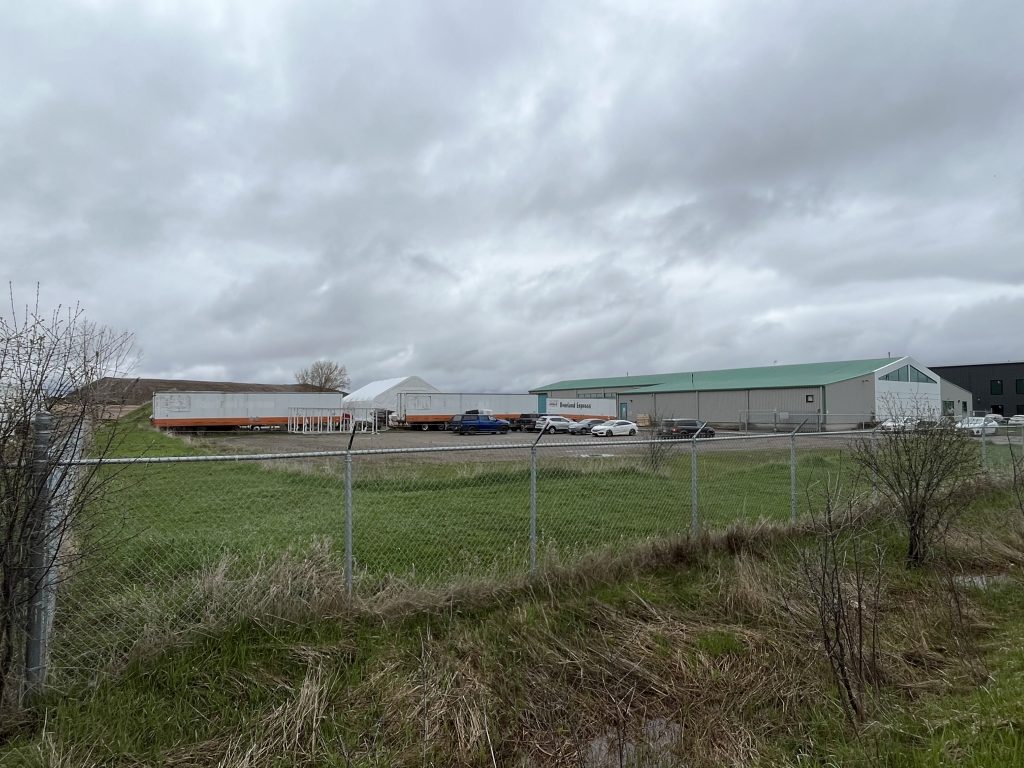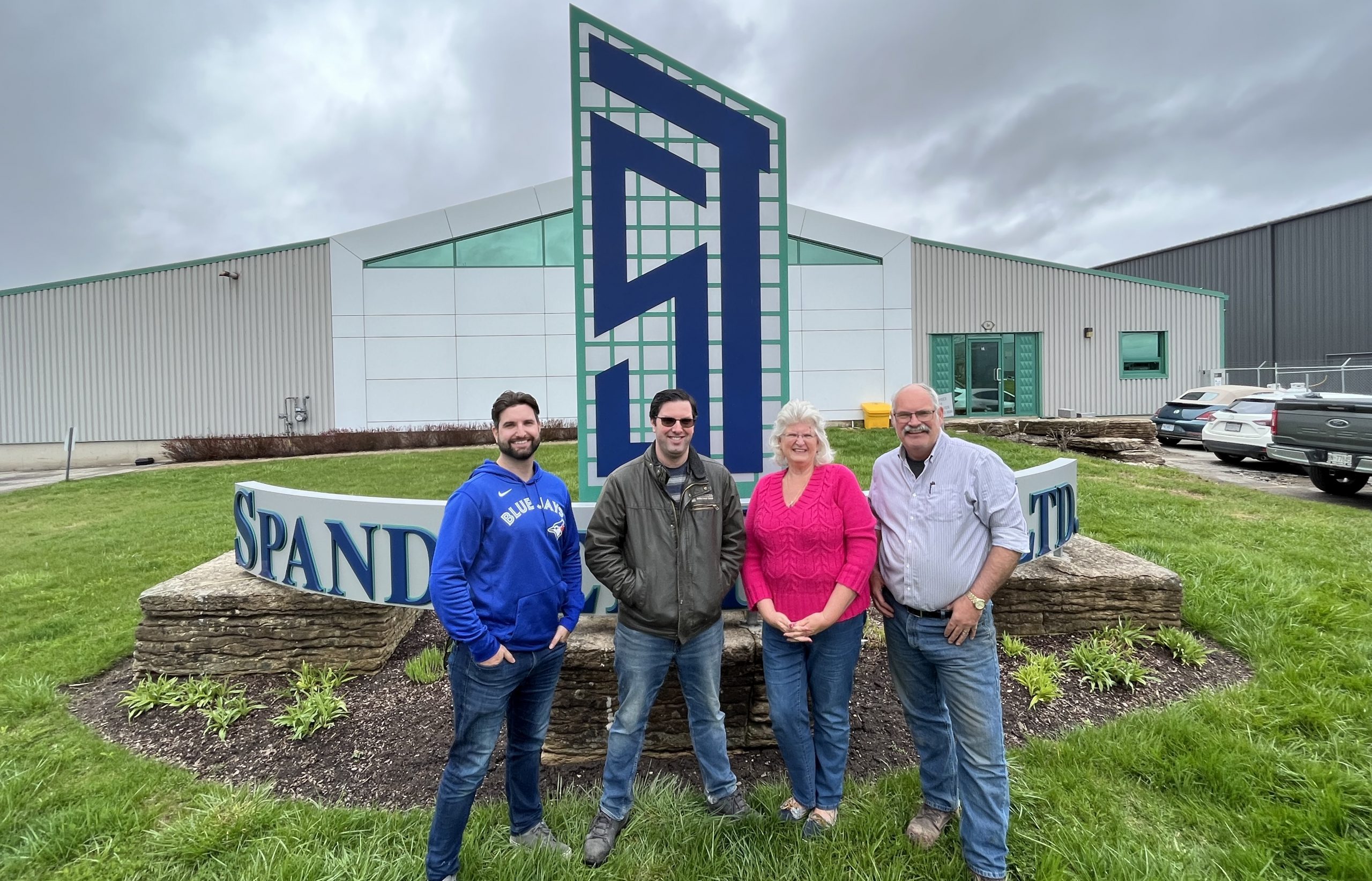ERIN – Wesley Sanders of Spandreltech Ltd. says Erin is “out of touch” when it comes to the town’s development charges.
A decision to expand the operation to 34,000 square feet in total from its current 16,000 square feet is made “almost impossible” by the town’s development charges, Wesley told councillors at an April 27 meeting.
Going a step further, he said the “huge development charge” is the company’s biggest hurdle to its physical growth in town.
Spandreltech was built “from scratch” Wesley told the Advertiser.
He and his wife Irene have been at the helm since 1991, and Erin has been home to the business since 2001.
They’ve grown to employ 37 people — up from 16 employees in 2014 — and hope to employ a total of 74 people within the next decade.
Jobs flow through their fabrication shop in a ‘U’ shape, with materials coming in the receiving door, winding their way through CNC machines, brake presses and welders before heading out the shipping door and into the back of a trailer destined for manufacturing facilities across the continent.
On a recent Thursday, employees working at a 14-foot brake press were forming architectural panels destined for Brampton, where they will be assembled into large glass units, and shipped to midtown Manhattan where the units will form the facade of a new, 32-storey, 400-foot skyscraper on West 43rd Street.
“We’re the smallest of all my competition right now,” Wesley said. “But the volume we turn out is unreal.”
At any given time, the company supplies nine major manufacturing lines in Canada and the U.S., in addition to several hundred smaller customers.
Around 20,000 square feet of product was processed and shipped out in a recent week, according to the family.
Wesley and Irene, both 60 years old, say succession planning is already underway. Their sons, Blake and Corey Sanders, are in senior leadership roles, overseeing finance and operations respectively, and are expected to see the company through the decades ahead.
At the same time, Spandreltech is quickly outgrowing its building.
“We’re using every single inch of this place,” Corey said.
Simply driving a forklift from one end of the building to the other has turned into a stop-and-go journey, as carts stacked with finished products are shuffled around to make way.
“Nothing can sit on my floor for more than five days, because I don’t have the space for it,” Corey said.
With the increasing volume of work and new equipment brought in for more complex jobs, the family either needs to construct a new, purpose-built building on the property, or move the operation entirely.
But as the family made clear before council last week, Erin may not benefit from the company’s inevitable expansion – and increased tax revenue – if development charges aren’t brought down to a level comparable to nearby municipalities.

The Sanders family behind SpandrelTech Ltd. wants to construct a new, purpose-built building on 1.2 acres of land at their Erin Park Drive property, seen in this photo. But the family says the Town of Erin’s development charges are prohibitively expensive. Photo by Jordan Snobelen
“We’ve been going back and forth with the Town of Erin for upwards of four years now … trying to find a way to make this expansion and this secondary building happen,” Corey said.
“We want to build here, but it’s unaffordable.”
Based on Wesley’s math, for every square foot of a new build in town, they’ll be forking out $12.57, for a total of $251,400 in development charges alone. And that’s without hooking up to the wastewater treatment plant currently being built.
Wesley says another $75,000 will have to be spent on a new septic system, lasting somewhere between two and three decades before connecting to the town’s system.
But Spandreltech sits within the water and wastewater servicing area of the new plant, meaning the business is subject to water and wastewater development charges.
According to a detailed breakdown of Erin’s current development charges, provided by spokesperson Lavina Dixit, the Sanders would spend $21.38 per square foot once water and wastewater charges are factored in.
To make matters more contentious, council is currently considering a proposed increase of the wastewater portion of the charges to $11.22 per square foot from $6.16 currently.
If that increase is voted through, development charges on an 18,000-square-foot facility could ring in at $475,920.
The increase in wastewater-related charges, according to a study contracted by the town to Watson and Associates Economists, is to account for the increase in the cost of the plant to $128.9 million from $67.20 million, and the increased cost of the collection system to $57 million from $20 million.
The plant and its major trunk are largely being paid for by developers, which are:
- covering the cost of servicing existing residents and businesses;
- paying applicable development charges on their land; and
- providing money to the town in advance for future development lands that will eventually connect to the system.
Current residents and businesses account for 33% of the wastewater system’s capacity. The remaining capacity is for growth.
The vast majority (60%) is already spoken for in signed developer agreements with the town, according to Dixit.
The remaining 7% of the plant’s capacity is for future growth, and is paid for through “front-ending agreements” with developers, Dixit said.
“It is the [front-ending agreements] which must be recovered from new developments and remitted to the developers who are providing the upfront funding,” Dixit explained.
Speaking to councillors last week, Blake said each additional development charge dollar “is an additional reason to look elsewhere.”
“We are a town that needs industry to survive,” Corey remarked.
Keeping people in town with jobs, he added, “should be of the utmost priority; every person sitting on council needs to know that.”
Councillors John Brennan, Cathy Aylard, and Bridget Ryan each responded by phone to a list of emailed questions from the Advertiser for this story saying they are waiting on staff to report back to council about the proposed wastewater development charge increase.
Councillor Jamie Cheyne did not provide responses.
Council must decide if the wastewater charge increases, but as Gary Scanlon of Watson and Associates cautioned, if the charge isn’t increased, council will have to look to the tax base.
Wesley says he has “stirred up a hornet’s nest” but stresses the family’s concerns resonate throughout the local business community.
Blake said the family has been approached by surrounding municipalities (which Wesley declined to name) asking, ‘“How do we get you to come here?’”
The Sanders argue other municipalities, such as North Perth (Listowel), have more reasonable development charges.
The family wasn’t comfortable discussing how much money they’re expecting to spend on Spandreltech’s expansion, but Wesley said the figure runs into the millions of dollars.
“We’re gambling on ourselves,” Corey said. “Everything is on the line.”
For now, stacks of designs and blueprints for the new Spandreltech building sit in limbo, piled atop a pool table as the family wait to find out what council’s next move will be.
Dixit said council often defers to staff to gauge the impact of reducing a development charge.
“Council will be guided by the report which will outline the cost impacts to businesses and residents,” Dixit said.
Erin is “optimistic” about job creation and growth in the town, Dixit said, adding it has a “robust community improvement program” intended to support businesses.
“Beyond that, market factors will determine whether a business chooses to invest in the community,” she said.




